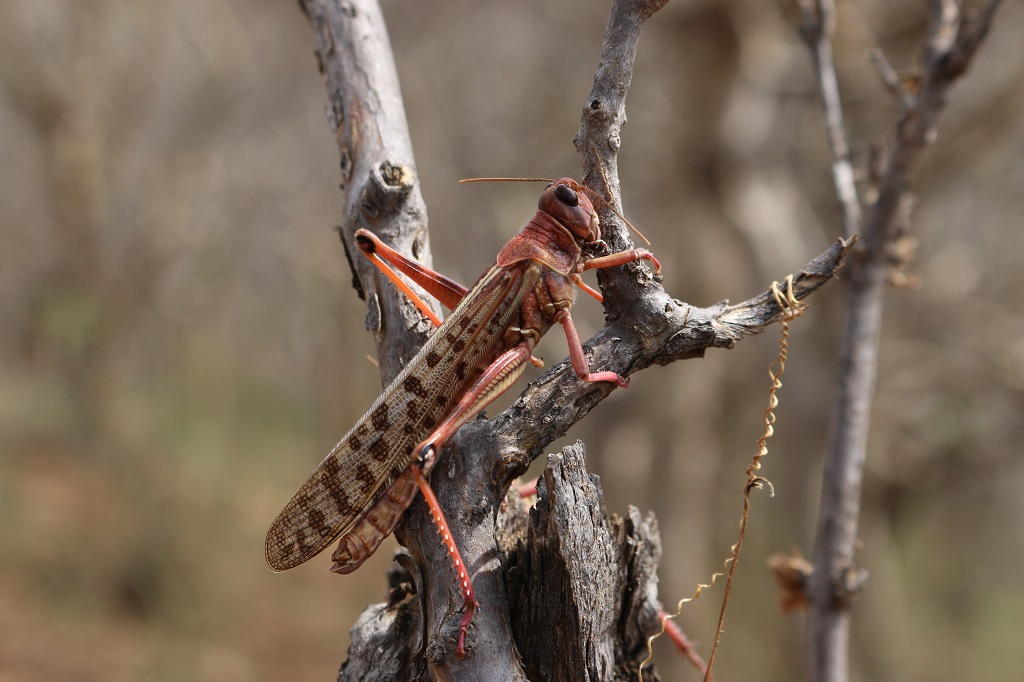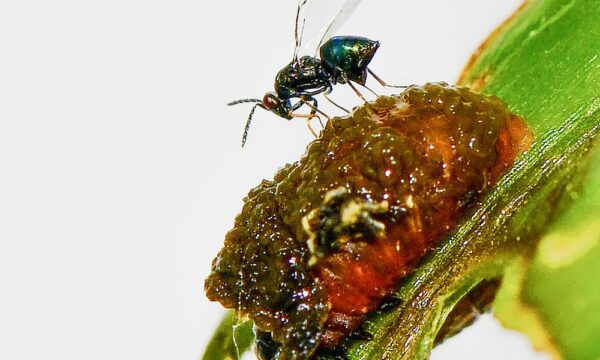
On 12 October, as part of a virtual side event for the World Food Prize’s annual Borlaug Dialogue, CABI hosted a panel session on A plague during a pandemic: how to increase resilience against the desert locust outbreak. The webinar aimed to communicate the urgent need for a comprehensive and coordinated response to this year’s locust outbreak in Eastern Africa, especially in light of acute food security and supply chain issues exacerbated by COVID-19.
Chaired by CABI’s Dr Ivan Rwomushana, Senior Scientist in Invasive Species Management, expert speakers on the panel included Prof Hamadi Boga, Principal Secretary at the State Department for Agricultural Research in Kenya, Keith Cressman, Senior Locust Forecasting Officer at the FAO, and Yann Miège, Head of International Sales at Éléphant Vert.
According to the Food and Agriculture Organization (FAO), around 20 million people in Ethiopia, Kenya, Somalia, South Sudan, Tanzania and Uganda face acute food insecurity due to a second desert locust (Schistocerca gregaria) outbreak and the COVID-19 crisis. Locusts and grasshoppers regularly decimate crops in many parts of Africa and Asia with locusts, in particular, responsible for invading in swarms of millions, leaving behind ravaged fields and putting livelihoods and food security at severe risk.
Mr Cressman explained that we currently face the worst desert locust crisis for 25 years in the Horn of Africa, and 70 years in Kenya. He described the conditions leading up to the desert locusts’ unprecedented spread and how, by the end of 2019, the situation was out of control.
Desert locusts easily migrate long distances and breed rapidly; eight generations of breeding represent a 25 trillion-fold increase in locust numbers. One of the swarms during the current crisis was the size of Luxembourg. When locusts arrive in very large numbers, ground control by farmers will not suffice. Teams of trained experts are needed to deploy chemical and biological pesticides using aircraft. Since January 2020, nearly one million hectares of land have been treated in 10 countries, killing over half a trillion locusts.

The implications for food security are considerable. However, action taken against the locusts has averted a loss of cereal worth about half a billion dollars in the Horn of Africa alone – enough to feed 10 million people for one year.
Continuing the panel discussion, Prof Boga described the difficulty of preparing for such a crisis; Kenya last experienced locust swarms of this magnitude 70 years ago. He articulated the lessons learned: “I think even if a pest has not been around for a long time, you still need to maintain the knowledge base capacity to understand such a phenomenon.”
Swarms arrived in waves from Somalia and, by their peak, had reached 28 of Kenya’s 47 counties. Prof Boga said, “the scenario looked bleak”. At one point, the country was tackling over 500 swarms.
One of biggest challenges was training enough experts to deploy chemical and biological pesticides, and accessing enough PPE and aircraft with ULV sprayers. With the arrival of COVID-19, Kenya had to declare the swarms an emergency and allow technical teams to travel and control them.
However, through their efforts, Kenya has managed to limit the migration of the locusts. The FAO mobile ELocust3m app used to track the swarms worked well and gave accurate forecast maps. Now, the swarms are largely under control. The last swarm was sprayed with a biopesticide and officials are hoping this swarm was the last in the country, although there are stills risks of new invasions from neighbouring countries.
Biological control has been an important tool in managing the locust swarms. Mr Miège from Éléphant Vert, talked about the development of biocontrol for desert locusts. One of their biocontrol products, Green Muscle, came out of an R&D programme developed in the 90s with CABI and African research organisations and has been trialled in southern and western Africa.
This product focuses on prevention, tackling the young generation of locusts before they become adults and start to fly. The product is sprayed like a chemical pesticide but takes about three weeks to take effect, which is why it is considered preventative. This year’s crisis saw Green Muscle used at its biggest scale ever, which caused challenges in production and delivery. In Somalia, the FAO organised spaying of Green Muscle over more than 100,000 hectares.
Mr Miège highlighted the importance of prevention but pointed out that many countries are not prepared to address locusts; the swarms often arrive before action is taken. One of his ‘take away messages’ was “financing prevention will always be a ‘win’”.
The FAO, national governments, CABI and the private sector continue to step up the fight against these crop-destroying locusts using cutting edge innovations such as biological controls and drone technology. CABI and Astral-Aerial partnered this year to pilot the use of drones to control the desert locust. Findings will be used to determine if drones can be used as a complementary tool to manage smaller locust swarms.
Watch the webinar in full on YouTube
Photos: Ivan Rwomushana, CABI
1 Comment
Leave a Reply
Related News & Blogs
Biological control in action: Zambia’s field days on fighting fall armyworm
Experts from CABI recently held two field days and an expo in Zambia, showcasing innovative approaches to pest management to 584 farmers, agro-dealers and other stakeholders to help raise awareness of approaches to tackle the invasive fall armyworm (Sp…
11 June 2025





[…] A plague during a pandemic: How to increase resilience against the desert locust outbreak […]